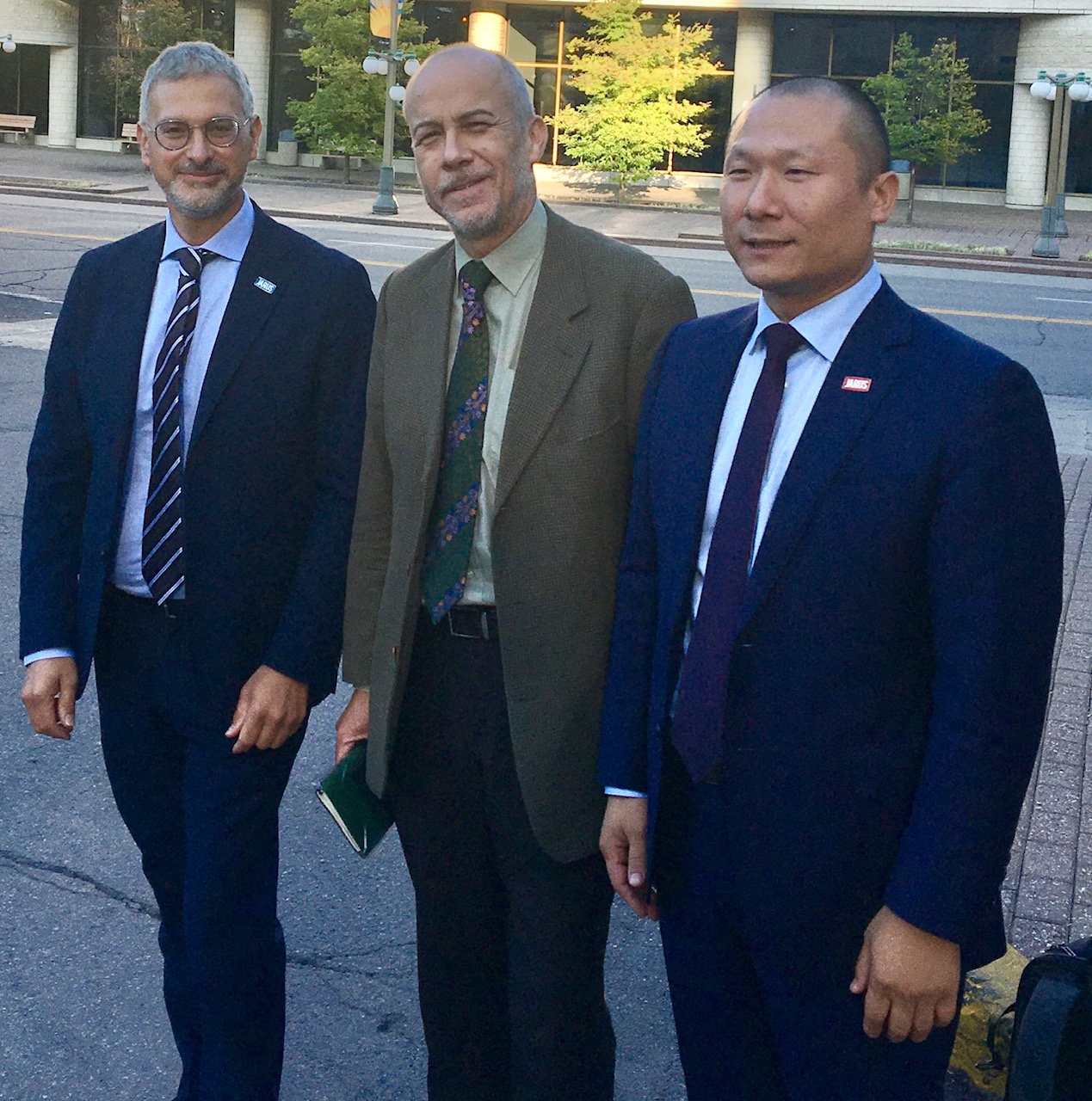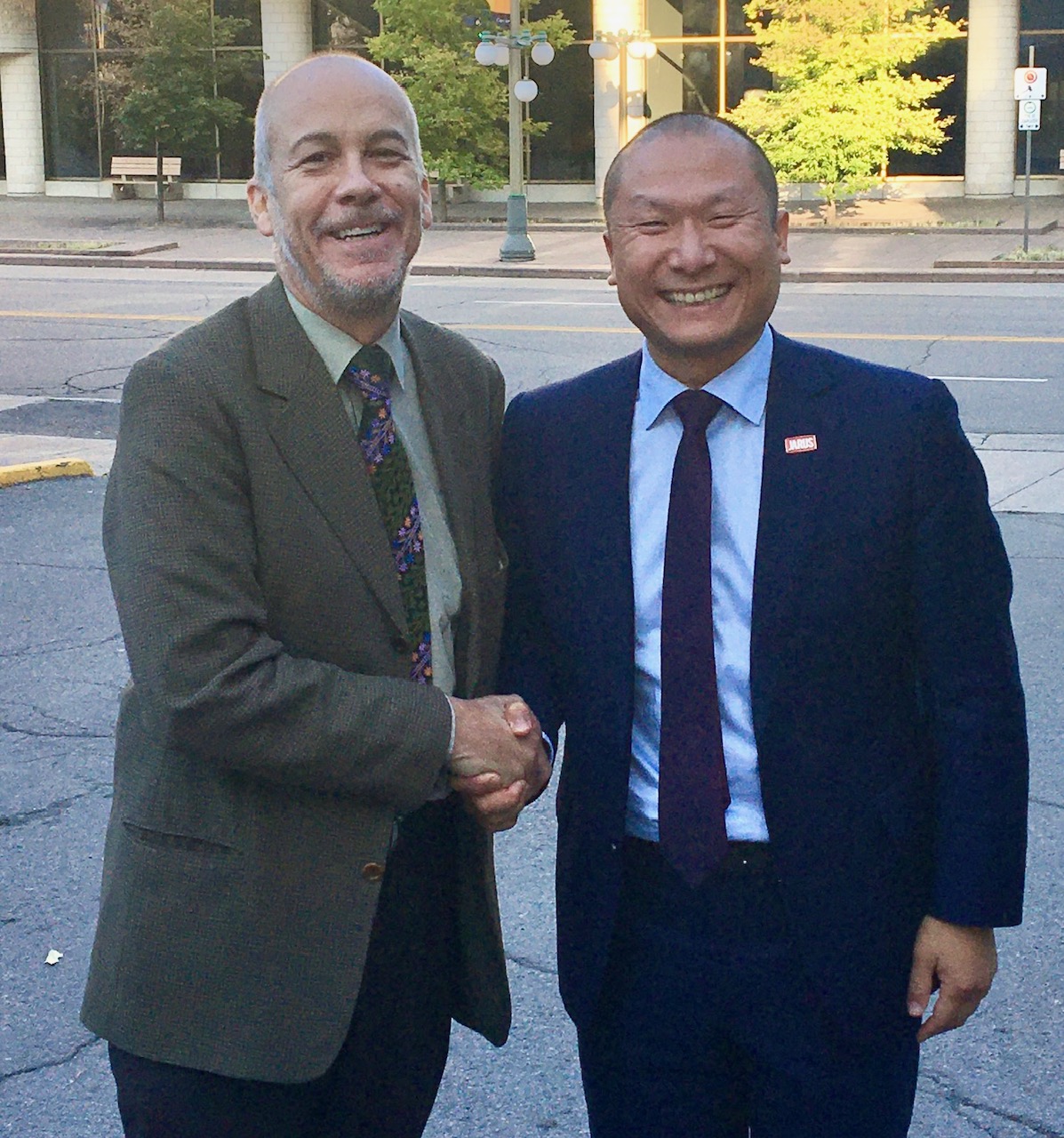By Jeff Peet, Managing Editor, ALA News.

- What is the nature of the event that has brought you to Ottawa, Canada on this occasion?
Giovanni Di Antonio: In Ottawa we are working on the second plenary session of our organization this year. We usually meet biannually in different parts of the world and in accordance with a given hosting member aviation authority. The current meeting here has allowed us to return to our twice-a-year gatherings that had experienced a parenthesis during the pandemic. We are a well-structured voluntary organization made of 64 national civil aviation authorities plus EASA and EUROCONTROL.
- What are the regions of the world where you are the most active?
LIU Hao: JARUS covers three regions of the world: Europe & Africa, The Americas and Asia & Oceania. This allows us to have a routine of conferences and having our plenary hosted in the three regions we currently cover. We organize our meetings based on a rotational fashion to cover the three regions that we represent equally in order to secure an equitable participation. The next meeting will be held between May 13 and 17 2024 in Astana, Kazakhstan and the Aviation Administration of Kazakhstan will be our host.
- How would you define JARUS?
LH: All the JARUS work is relying on a group of experts from or nominated by the aviation authorities representing and originating from the three regions of the world. We are coming together to work and fulfill the request of regulations on unmanned systems. We are doing this as we confront the need for answers to a shared and similar regulatory request.
GD: The scope of these experts is to provide recommendations on regulations that may be used by our members as their rules on unmanned systems, or that enable to support its development.
- How is JARUS organized?
LH: The top decision body is the Plenary Team (PT) where most things are agreed and all 66 members are part of that. For the daily operation of JARUS, we have the Leadership Team (LT). The LT is the executive body of the organization which is composed of one Chair, two Vice Chairs, a Secretary-General and the leaders of working groups of different areas, that carry on the work program. The Leadership Team convenes monthly. The working program, the publication of deliverables and election of officers are approved by the plenary.
- What are the main objectives and challenges of JARUS so far?
GD: Our main objective is to develop regulatory recommendations that may be used to build a regulatory framework in different countries and/or regions of the world. Our scope is to propose regulations, and Acceptable Means of Compliance (AMC) for our members.
As for challenges, we have several. There are the technological ones where the problem of how to safely integrate the UAS/drones into the aviation system is among them. In particular, we are facing two emerging challenges (or New Entrants, in ICAO language): the Advanced Air Mobility (AAM) providing innovative services to our societies by UAS/RPAS with or without people on board of which eVTOL is one example. And secondly, Higher Airspace Operations (HAO), i.e., those operations carried out at a very high altitude above FL550/600 on the boundary of space. These two types of technological challenges add to the organizational ones that refer on how to accompany the evolution of technology with a good institutional model that is capable to evolve. Indeed, we cannot simply maintain the same way forward as we have had for the last 15 years, and so there is a clear need to adapt ourselves in the coming decade.
LH: Our challenges are also those of ICAO and other governmental international organizations, but we are handling them in an innovative and efficient manner. We have a new set of operations, and as our Chair just mentioned, new technologies to bring into account. A single regulator might not have enough knowledge or resources to keep pace with the technological innovation in these sectors, and trying to regulate something new where you do not have a full understanding turns out to be quite a challenge. We are catching up fast in different areas benefiting from our flexible organizational model and industry expertise. There is more innovation happening and we are also touching on that.
Then, even though we are based on a reality where we do not have a financial budget from anyone, we have managed to organize 66 members that are working on a large scale of topics and we have come up with timely deliveries of very high quality, such as SORA, during years. We have made it; we have been operating for 15 years and we have received recognition from both member and non-member regulators.
Ultimately, there is our ability to maintain and expand external connections and by that, I mean our good relationship with ICAO and our outreach to national aviation authorities. We have good rapprochement and we are operating successfully at the regional, national and global levels.
- What do you think is your place within aviation or where do you see yourselves within the industry? Are you the new frontier?
LH: In the aviation ecosystem, we have 5 critical players, manufacturers, operators/airlines, airports, Air Navigations Service Providers (ANSP) and supporting service providers. Currently, JARUS focuses on manufacturers, operators and operations. We may also interact with ANSPs because unmanned aviation needs the support from ATM and/or UTM. We are concentrating on those areas that our member NAA/CAA and the industry are requesting, and achieving our goals with their contributions. We are aware that these are our initial 15 years of work, and we need to listen to the request of the regulatory authorities that are members and the industry very carefully as we are working on the draft and harmonization of the unmanned aviation regulation.
GD: It is important to clarify that JARUS is an institutional organization. That means our members come from the authorities, namely governments, regional agencies or international organizations. According to the modern way of rulemaking, we need to develop regulations in an adaptive way when it comes to the technologies’ side and in cooperation with the stakeholders as well. So, we need to understand the needs of the industry, to gather the expertise and to try to provide the regulations or at least the recommendations that are needed. In this respect, JARUS has a strong advisory body, namely the Industry and Stakeholder Body (ISB), which represents the industry and other stakeholders across different domains of aviation. The ISB provides us advice and Subject Matter Experts who contribute to the working groups. It is actually there where our strong connection to the industry lies. We have an engagement with the sector from different perspectives and it covers almost all its levels.
- In terms of membership, where do you see opportunities for JARUS to grow even further?
GD: Our aspiration is to increase the number of member states. That means including more Civil/National Aviation Authorities or Ministries of Transportation, regional agencies like EASA and international organizations similar to EUROCONTROL. Having said that, we are really working hard to establish connections with all the regional and international organizations dealing with drones or that have an interest in them. The idea is to coordinate our work to avoid duplication of efforts so that we can effectively move forward as much and as fast as we can. For example, we have been having some discussions with the World Food Program and other counterparts such as EUSPA, the European Union Agency for the Space Program, as drones are not foreign to their mandate and line of work.
- Do you have the aspiration of becoming an international organization?
GD: That is something being discussed but we have not arrived at any conclusion about it. Now, we clearly feel there might be some positive response if JARUS were to become an officially registered international organization but for that, there is a process that needs to be started and a road to go down on. However, that decision is for the plenary to make. Let’s say that now, we are reflecting on that and we are doing so by using one of our strengths which is being a flexible and agile entity, understanding to the fullest that we cannot lose that ability to adapt and move fast.
LH: We are growing and have managed to incorporate 66 members from around the world. It is time for JARUS to move forward even with a more formal posture by evolving to a traditionally registered international organization. This is one of the choices. Eventually, we need to answer and find an acceptable solution. However, whatever we do in that respect, we will do it in an innovative way. We may also think about the position of JARUS in a new definition of international organization according to a new, innovative, and pragmatic definition. Today, JARUS is an international organization. All in all, JARUS will only choose the international organization model that could serve the interests of member aviation authorities and the unmanned aviation industry better. This is gene of JARUS.



